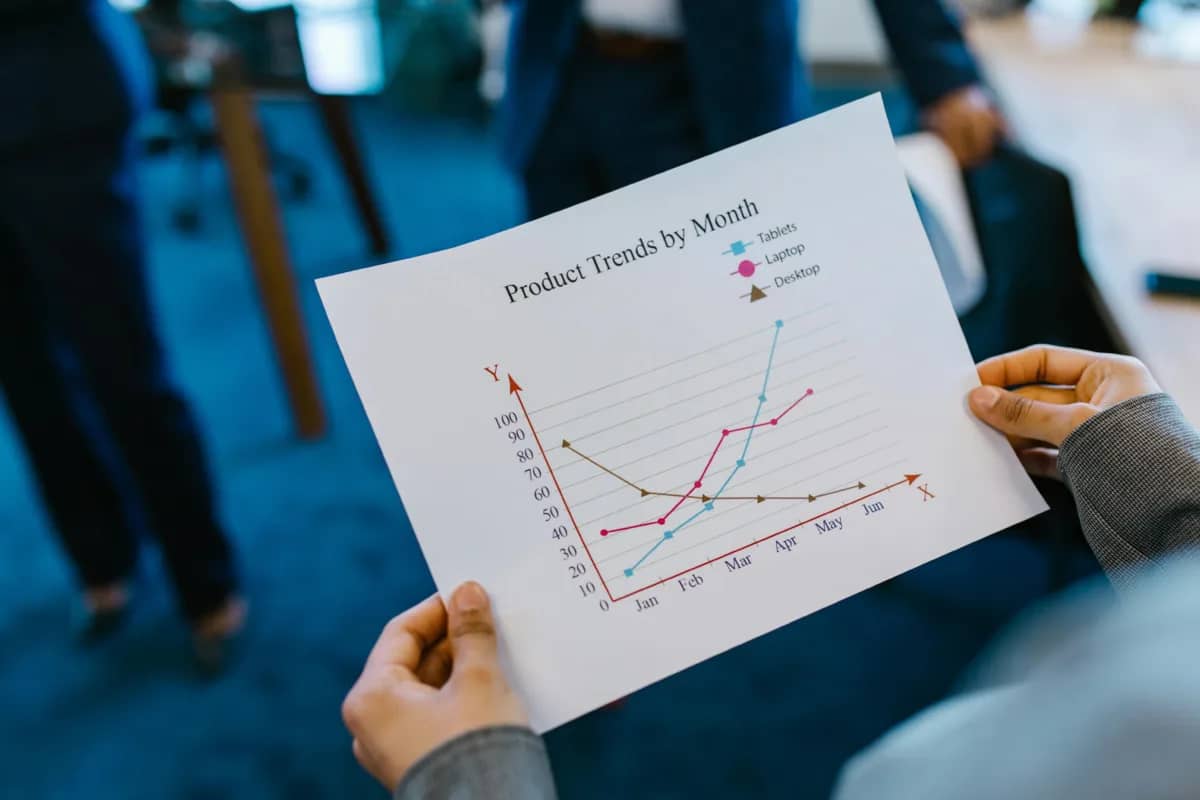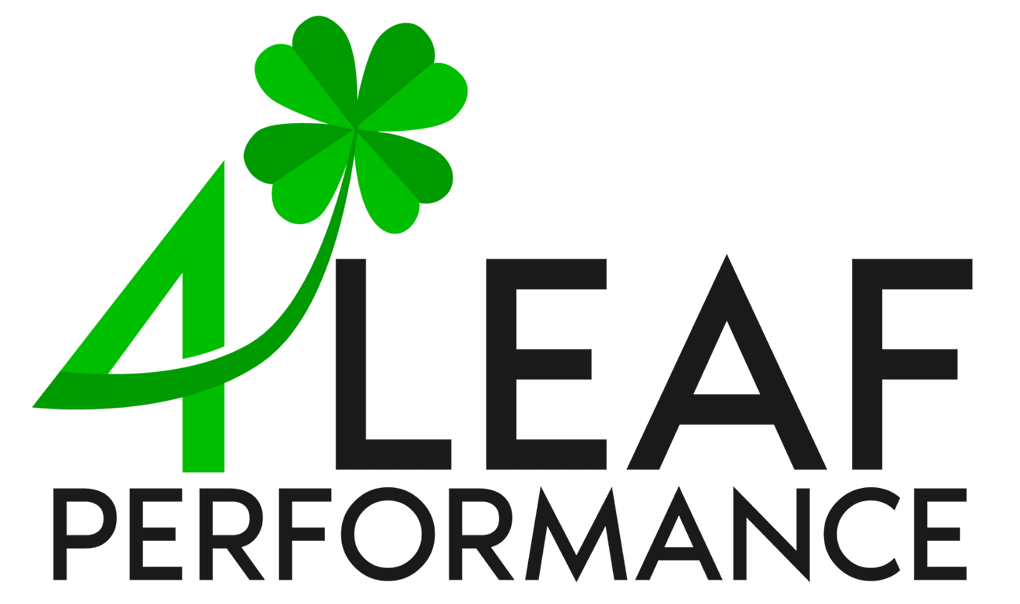Spotting emerging market trends before competitors can give your business a critical edge. Understanding where your industry is headed allows you to innovate, meet evolving customer standards, and stay relevant. Yet many businesses only react to trends once they’re already well-established, missing out on opportunities to lead.
Analyzing market trends is about looking beyond the obvious to uncover subtle changes that signal where your industry might go. By mastering trend analysis and using advanced methods like predictive analytics and social listening, you can position your business as a trendsetter rather than a follower.
Understanding Market Trends
To effectively spot emerging market trends, it’s essential to understand what they are and why they matter. Market trends represent the general direction in which a particular industry, product category, or consumer behavior is moving. These shifts can range from small changes in customer preferences to larger disruptions driven by technology or societal shifts. Recognizing these trends early allows businesses to adapt and innovate, giving them a clear competitive advantage.
What Defines a Market Trend?
Market trends are not just short-lived fads. They reflect measurable shifts in consumer behavior, business strategies, and technological advancements over a sustained period. For example, the rising demand for sustainable products is not just a passing phase—it’s an industry trend backed by data showing consumers’ growing preference for environmentally friendly options.
Understanding and analyzing market trends involves identifying patterns in data, such as customer purchasing habits, technological innovations, and broader economic factors. This process, often called trend analysis, helps businesses make informed decisions that align with future market movements.
Why Market Trends Matter
Staying on top of market trends is crucial for several reasons:
- Competitive Advantage: Businesses that identify and act on industry trends early often outperform competitors who react later.
- Customer Alignment: You can meet evolving customer standards and foster loyalty by aligning with emerging trends.
- Strategic Decision-Making: Analyzing market trends provides insights into allocating resources effectively and developing products or services that meet future demands.
By defining market trends and understanding their importance, you lay the foundation for more advanced techniques, such as predictive analytics and social listening, which will be covered in the next sections. This knowledge ensures your business remains adaptable, innovative, and prepared for the challenges ahead.

Advanced Techniques to Spot Emerging Market Trends
Identifying emerging market trends before they become mainstream requires more than intuition—it demands advanced techniques and tools.
Predictive Analytics: Using Data to Forecast Trends
Predictive analytics leverages historical data to identify patterns and predict future market movements. Businesses can anticipate shifts by analyzing customer behavior, sales data, and external factors before they fully materialize.
Key Elements of Predictive Analytics in Trend Analysis:
- Behavioral Patterns: Track recurring customer actions, such as seasonal purchases or preferences for specific product categories.
- Economic Indicators: Use data like interest rates or unemployment figures to understand broader impacts on consumer spending habits.
- Technology and Tools: Platforms like Tableau and Google Analytics help visualize data trends and forecast future outcomes.
Practical Example: A retailer using predictive analytics might recognize an annual spike in demand for outdoor equipment in early spring. By identifying this pattern, they can adjust inventory and marketing strategies to maximize sales.
Social Listening: Gaining Insights from Conversations
Social listening involves monitoring online conversations to understand what people say about products, services, and industries. It offers real-time insights into consumer sentiment and emerging preferences, making it a vital tool for spotting trends early.
How Social Listening Supports Market Trends Analysis:
- Identifying Emerging Topics: Track keywords and hashtags related to industry trends.
- Sentiment Analysis: Gauge customers’ opinions about specific topics, brands, or products.
- Influencer Activity: Monitor industry influencers to see what they discuss or promote.
Recommended Tools: Brandwatch, Sprout Social, and Hootsuite are popular platforms for tracking social conversations and gathering actionable insights.
Practical Example: A food brand may discover through social listening that plant-based protein is gaining attention among fitness enthusiasts, prompting them to introduce a new line of plant-based products.
Trendspotting Tools: Technology-Driven Insights
Dedicated trendspotting tools help businesses identify and monitor trends using advanced algorithms and curated data. These platforms analyze market data, consumer behavior, and industry reports to highlight opportunities and risks.
Popular Trendspotting Tools:
- Google Trends: Identifies search volume spikes for specific topics.
- TrendHunter: Provides curated insights on the latest global trends.
- WGSN: Offers forecasts based on industry analysis and expert opinions.
Why Use Trendspotting Tools:
- They save time by consolidating data from multiple sources.
- They provide a clearer picture of emerging industry trends with actionable insights.
- They enhance decision-making by validating intuitive observations with data-backed evidence.
Beyond Tools: Broader Contexts for Trendspotting
While tools and technology are essential for identifying emerging market trends, understanding the broader context can provide deeper insights. Trends don’t occur in isolation; they are shaped by cultural, economic, and technological shifts that influence consumer behavior and industry developments. By paying attention to these external factors, businesses can refine their trend analysis and make more informed decisions.
Cultural Shifts: Adapting to Changing Values
Cultural changes often serve as the foundation for new market trends. As societal values evolve, so do consumer preferences and expectations.
Examples of Cultural Influences on Industry Trends:
- Sustainability Focus: Increasing awareness of environmental issues has led to growing demand for eco-friendly products and services.
- Generational Preferences: Millennials and Gen Z prioritize experiences over material goods, influencing trends in travel, entertainment, and lifestyle products.
Practical Application: Regularly monitor cultural conversations and behaviors to align your products or services with emerging consumer priorities.
Economic Indicators: Understanding Market Conditions
Economic shifts play a significant role in shaping market trends. Changes in consumer spending often reflect broader economic conditions such as inflation, recession, or growth periods.
Key Economic Factors to Monitor:
- Consumer Spending Trends: Assess disposable income levels and purchasing priorities.
- Market Cycles: Understand how economic booms and downturns impact demand for products and services.
- Global Trade Dynamics: Track tariffs, supply chain disruptions, or currency fluctuations that affect market conditions.
Practical Application: Combine economic data with trend analysis to anticipate shifts in customer behavior and adjust business strategies accordingly.
Technological Advancements: Driving Industry Evolution
New technologies often act as catalysts for market disruption and innovation. Staying informed about technological advancements can help businesses identify opportunities for growth and adaptation.
Examples of Technology-Driven Market Trends:
- Artificial Intelligence (AI): AI-powered tools are transforming industries by improving efficiency and personalization.
- Internet of Things (IoT): IoT devices or smart devices create new opportunities in industries like healthcare, home automation, and logistics.
- Blockchain: Blockchain technology is reshaping financial services, supply chain management, and data security.
Practical Application: Monitor technological advancements directly impacting your industry and consider early adoption where feasible.

Building a Holistic Trendspotting Strategy
Identifying market trends requires a well-rounded approach integrating data, tools, and human intuition. A holistic trendspotting strategy ensures that businesses not only gather insights but also effectively act on them.
Establish a Dedicated Trendspotting Process
Make trend analysis a structured part of your business operations to stay ahead of industry trends. Assign specific team members to monitor changes in your industry and report their findings regularly.
Steps to Build a Trendspotting Process:
- Define clear objectives for your trend analysis efforts.
- Set a regular schedule for reviewing tools, data, and reports.
- Create a centralized system to document and share insights with your team.
Practical Tip: Combine insights from multiple sources, such as predictive analytics and social listening, to create a well-rounded view of emerging trends.
Leverage Data and Human Intuition
While tools and data provide valuable insights, human intuition adds context and creativity to the process. Combining both helps businesses spot nuanced patterns that technology alone might miss.
How to Combine Data and Intuition:
- Use tools to collect quantitative data on consumer behavior and industry changes.
- Encourage team members to share observations from their interactions with clients, partners, and competitors.
- Host brainstorming sessions to evaluate trends and explore innovative responses.
Practical Tip: Engage team members from diverse roles to bring fresh perspectives to your trend analysis efforts.
Regularly Analyze Competitor Strategies
Keeping an eye on your competitors can reveal valuable insights about industry trends and opportunities. Analyze their product launches, marketing strategies, and customer interactions to identify patterns.
What to Look For:
- Changes in product offerings that align with emerging trends.
- Shifts in their marketing messages or target audiences.
- Strategic partnerships or investments in new technologies.
Practical Tip: Use competitor analysis to identify gaps in your own strategy and refine your approach.
Foster a Culture of Experimentation
Adapting to market trends often requires testing new ideas and approaches. A culture of experimentation helps businesses stay flexible and responsive to changes.
Ways to Foster Experimentation:
- Run small-scale pilots to test the viability of new products or services.
- Use A/B testing to evaluate the effectiveness of different marketing messages.
- Celebrate learnings from both successes and failures.
Practical Tip: Establish clear standards for testing and evaluation to ensure experiments provide actionable insights.
Common Pitfalls to Avoid
Even with the best tools and strategies, businesses can make missteps when identifying and acting on market trends. Recognizing and avoiding these pitfalls ensures your trend analysis efforts are accurate, actionable, and impactful. Here are some common mistakes and how to avoid them.
Over-Reliance on Data Without Context
Data is a powerful tool, but it’s not the whole picture. Focusing exclusively on numbers without considering cultural, economic, and industry contexts can lead to flawed conclusions.
Why It Happens: Businesses sometimes assume that data speaks for itself without the need for interpretation.
How to Avoid It:
- Pair data insights with qualitative observations, such as feedback from your team or industry experts.
- Regularly review the broader market conditions to validate data-driven predictions.
Ignoring Micro-Trends in Favor of Mainstream Ones
Focusing only on widely recognized industry trends is tempting, but micro-trends often reveal early signals of significant shifts. Missing these smaller trends can mean falling behind competitors who act sooner.
Why It Happens: Micro-trends can seem too niche or temporary to warrant attention.
How to Avoid It:
- Use social listening tools to track emerging conversations around niche topics.
- Test micro-trends on a small scale to assess their potential impact.
Delaying Action on Identified Trends
Spotting a trend is only the first step—acting on it quickly is crucial. Businesses that wait too long to adapt risk losing their competitive edge.
Why It Happens: Teams may hesitate to invest resources in unproven trends.
How to Avoid It:
- Develop a system to prioritize trends based on their potential impact and feasibility.
- Run small experiments to test the trend’s relevance before scaling up.
Overlooking Competitor Movements
Failing to monitor competitor strategies can result in missed opportunities or a lack of awareness about emerging industry trends.
Why It Happens: Businesses may focus too much on internal strategies and neglect external influences.
How to Avoid It:
- Regularly analyze competitors’ offerings, messaging, and partnerships.
- Use competitive intelligence tools to stay informed about industry shifts.
Focusing on Short-Term Gains Over Long-Term Impact
Some businesses chase trends that offer immediate returns without considering their sustainability. This approach can lead to wasted resources and a loss of direction.
Why It Happens: Pressure to deliver quick results can overshadow strategic thinking.
How to Avoid It:
- Evaluate trends for alignment with your business goals and long-term strategy.
- Prioritize trends that address enduring customer needs or emerging standards.

Seize the Advantage: Master Market Trends with Proactive Strategies
Staying ahead of market trends is essential for businesses that want to innovate, meet customer standards, and maintain a competitive edge. By leveraging predictive analytics, social listening, and trendspotting tools, you can proactively uncover emerging patterns and adapt your strategies. Understanding these trends’ broader cultural, economic, and technological contexts further refines your decision-making. Avoiding common pitfalls like over-reliance on data or delaying action ensures that your trend analysis efforts drive meaningful results.
If you’re ready to take your business to the next level by identifying and capitalizing on market trends, 4 Leaf Performance is here to help. Our small business coaching services provide personalized strategies to help you navigate industry trends, analyze market opportunities, and build sustainable growth plans.
Start building your trendspotting strategy today. Contact 4 Leaf Performance for expert guidance and actionable insights tailored to your business needs. Let’s create a roadmap that positions your business as a leader in your industry.



